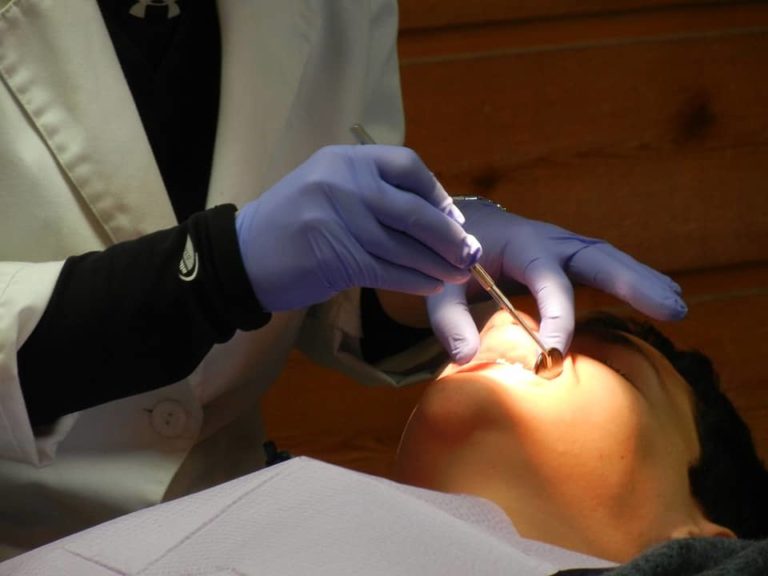Exposed dentine is the mechanism behind dentine hypersensitivity that causes intense pain for a short interval on alteration of mouth temperature. Abrasive brushing, acidic and hard diet, and medical issues can lead to DHS.
WHAT IS DENTINE HYPERSENSITIVITY?
Dentine sensitivity is the most common dental problem that defines as sharp, shooting pain that arises due to hot and cold stimuli. The duration of pain is shorter but the intensity is severe that distributes daily routine activity.
EPIDEMIOLOGY
According to research, 25% to 30 % of adults are affected by dentine hypersensitivity due to reasons of erosion that cause dentine exposure. Dentine hypersensitivity is common in Women as compared to males with age 30 to 40 years. In old age, gum problems and tooth root exposure is the major cause of dentine hypersensitivity.
WHAT ARE THE CAUSES OF SENSITIVE TEETH?
Dentine exposure is the major cause of dentine hypersensitivity. Dentine is composed of a sensory tubule covered with hard enamel, exposure to dentine due to different causes. In presence of thermal changes can affect exposed dentine which leads to dentine hypersensitivity.
ETIOLOGY
- Tooth wear and gum line reduction (gum rescission) is the major cause of dentine hypersensitivity.
- Tooth wear is the loss of the upper covering layer due to excessive dietary acid intakes such as citrus food, wine, and excessive soft drink intake
- Force full brushing with an abrasive particle in toothpaste can also cause loss of tooth cover and exposed dentine which leads to hypersensitive teeth.
- Gum recession or gum moving down the word, can expose the tooth root which is a sensitive part. Improper oral hygiene, hormonal changes, and aging are the cause of gum recession.
- Deep dental caries can also expose the dentine that causes tooth hypersensitivity.
- Fractured teeth and defects in the dental filling and tooth bleaching procedure can also produce dentine sensitivity.
DIAGNOSIS OF DHS AND HOW SENSITIVE TOOTH DIAGNOSIS?
Sensitive tooth show pain and discomfort on changing mouth temperature such as hot and cold stimuli. The dentist used a cold air blast or air pressure to check dentine sensitivity, tooth tapping and checking the tooth surrounding with the help of a dental explorer to exclude other causes of dental pain such as cavities or gum problems.
SIGNS AND SYMPTOMS OF SENSITIVE TOOTH?
In sensitive teeth Sharp, intense, and twinging pain upon taking hot, cold, or sweet food and drinks. Difficulty in enjoying food and drink. No obsessive changes are visible on the teeth with minor changes on the gum margin.
SYMPTOM AND PUTATIVE MECHANISM OF DHS?
Sharp, shooting sensitivity toothache on thermal stimuli like hot, cold, and sweet. Short-duration pain that disappears after the removal of stimuli is the symptom of a sensitive tooth. The mechanism of hypersensitivity is initiated with the dentine and dentinal tubules exposure which have sensitive nerves. changing mouth temperature by taking hot and cold meals can affect this exposed tissue. The common reason for dentine exposure is harsh brushing bristles, gingival recession, excessive acid food intake, and parafunction acidity such as night grinding.
TREATMENT OR HOW IS TOOTH SENSITIVITY TREATED?
- Oral hygiene maintenance education: such as using a soft toothbrush and correct brushing technique.
- Maintaining a good life Style: such as controlling an acidic diet, treating medical conditions that cause hypersensitivity (gastric reflux), and use of habit breakers for night grinding.
- Clinical treatment: Dentist control hypersensitivity by applying a desensitizing agent on the tooth or by tooth restoration
IN-CLINIC THERAPY
In–the clinic, two types of dentine hypersensitivity treatments according to the type of tooth sensitivity.
Non-invasive treatment in which desensitizing agent is applied by the dentist to block the exposed tooth tissue (dentinal tubules), such as dental sealants and other desensitizing agents. This treatment is only applicable for superficial dentine exposure or minor hypersensitivity.
Restorative dentine hypersensitivity treatment is used by dentists to restore the large tooth defect or extreme hypersensitivity in which dentine is exposed on multiple sides of the tooth. For the treatment of this type of sensitivity, the dentist covers the tooth surface with a veneer or crown for obturating exposed dentine.
In dentine hypersensitivity due to gum problems or tooth root exposure, the dentist performed minor surgery to cover the tooth root
TREATING MEDICAL CONDITIONS THAT CAUSE TOOTH SENSITIVITY
Medical and psychiatric conditions can cause dentine hypersensitivity by wearing the tooth-protective layer such as gastric reflux and teeth grinding in tension or stress can expose the dentine tissue. Medicines for gastric issues and psychiatric treatment can treat dentine hypersensitivity.
HOME TREATMENT
In-home hypersensitivity treatment use of desensitizing toothpaste, mouthwashes, and gums can resolve minor sensitivity issues.
Use of toothpaste and mouthwashes with a desensitizing agent such as strontium salt, glutaraldehyde, Flouride, potassium salt, oxalate, and arginine are
PREVENTION
- Maintenance of good oral hygiene with proper technique brushing uses of mouthwashes and floss after every meal.
- Avoid acidic food and beverages
- Taking medicine for gastric reflux problems.
- Use a habit breaker for night grinding.
CONCLUSION
Dentine hypersensitivity is the most common problem caused by exposure to sensory dentinal tissue that causes sharp short duration pain upon thermal stimuli. Proper oral hygiene, preventive measures, and early dental visit can resolve this problem.
